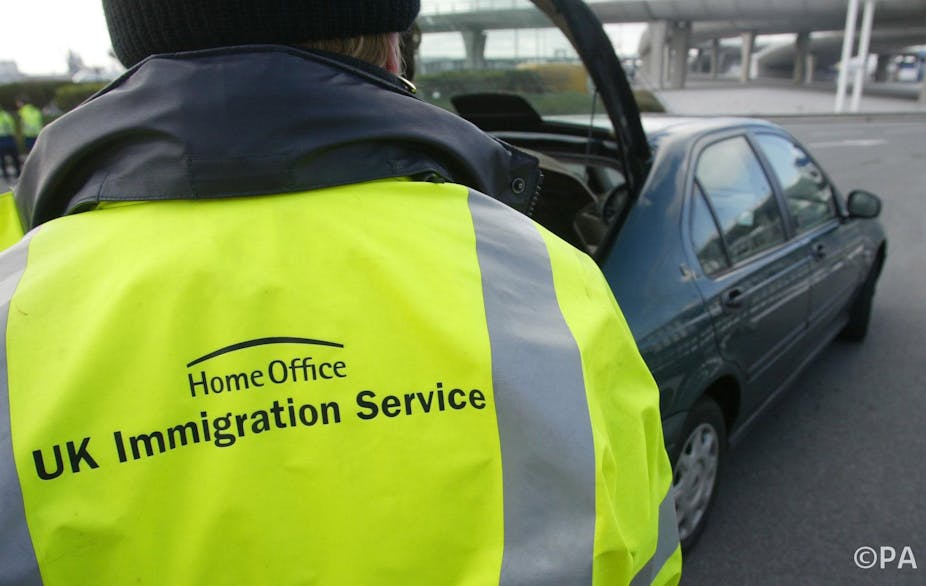With a new Immigration Bill making its way through the House of Commons, MPs will be asked to vote on whether asylum seekers can work in the UK as they wait for their claims to be processed.
An amendment to the Bill in the House of Lords provides for asylum seekers to be able to start work if they have been waiting for six months or more for a decision on their application for asylum. It is likely that this amendment will not pass the Commons.
Currently, asylum seekers must wait 12 months before they can apply for the right to work. If it is granted, they are then restricted to jobs on the “Shortage Occupations List”. This list is extremely restrictive: example jobs include engineers, secondary school maths and chemistry teachers – and ballerinas and nuclear medicine technologists. The shortage occupation list rule effectively bans most asylum seekers from working in the UK.
The work restriction was introduced in 2002 and for the past year we have been analysing the political debates on this policy at the University of Sheffield. We found that for 13 years, ministers and Home Office spokespeople have repeatedly given the same reason for this policy: if asylum seekers are given the right to work, more asylum seekers will choose the UK as a destination country. But this is not backed up by research.
Is work a pull factor?
We have undertaken a systematic review of both qualitative and quantitative research undertaken since 1997 looking at the factors determining asylum destination country. None of the 30 studies we looked at found a long-term correlation between labour market access and the choice of destination. Quite the contrary: the most up-to-date research concludes that access to work has little, if any, effect on variations in asylum applications
Countries which allow asylum seekers to access the labour market do not attract more asylum applicants. We have ranked European countries according to labour market access for asylum seekers and then compared the number of asylum applications received for each country. The ranking is based upon the point at which asylum seekers are able to enter the labour market – for example, after three or six months. It also takes into account the extent of restrictions on their access, such as to particular sectors or shortage occupations. EU countries for which such information was available are ranked from the most open (Sweden) to the most restrictive (the UK).
As the graph below shows, we found no clear correlation between access to the labour market and the number of asylum applications a country received.
This is because many complex factors are involved in the migration journeys of asylum seekers. They do not have perfect access to all information, and their choices are not made solely on the basis of economic benefit. Because of this complexity, it is extremely difficult for researchers to identify a single variable which acts as the primary “pull”. However, it is significant that repeated studies have come to the same conclusions.
According to the available data, the main pull factors are:
The presence of family and friends in destination country – they want to be near familiar people.
The language spoken in the destination country – privileging countries with a familiar language.
A belief that the destination country respects human rights and the rule of law in general.
Colonial ties between country of origin and destination – which is clearly related to the first three pull factors.
It is unlikely that access to the labour market for asylum seekers encourages economic migrants — whose primary motivation is migrating for work as opposed to escaping war or persecution – to apply for asylum. There is no research explicitly focusing on the pull factors for so-called “bogus” asylum seekers, those who migrate for work but nevertheless make an application for asylum. Yet, of the studies that we reviewed, the statistical research finds no long-term correlation between labour market access and the number of bogus asylum seeker applications.
Too simplistic
Introducing complexity and uncertainty are not part of the political repertoire: the simple story always wins. The Home Office and immigration ministers refer to the “pull factor”, probably because it is very simple and easy to comprehend. It is very easy to communicate to the public and to Lords and MPs who may not have any expertise on asylum. But in reality, it is not possible to say with any certainty that one single policy – or factor such as access to work – acts to pull or deter potential asylum applicants.
Nevertheless, a general hostility to immigrants means that a policy that aims to crack down on any category of immigrant is likely to be well received by the public. According to opinion polls, asylum seekers are among the most reviled of all immigrant groups. The existing policy of forbidding asylum seekers to work aims not to take away a pull factor, but rather to make it look like the government is restricting the rights of asylums seekers.
The risk of giving asylum seekers the right to work is not, then, that the number of asylum applications will increase – but that there will be public anger at the gifting of privileges to immigrants. But this is an issue beyond politicking – the lives of people who have fled war and persecution are at stake.

